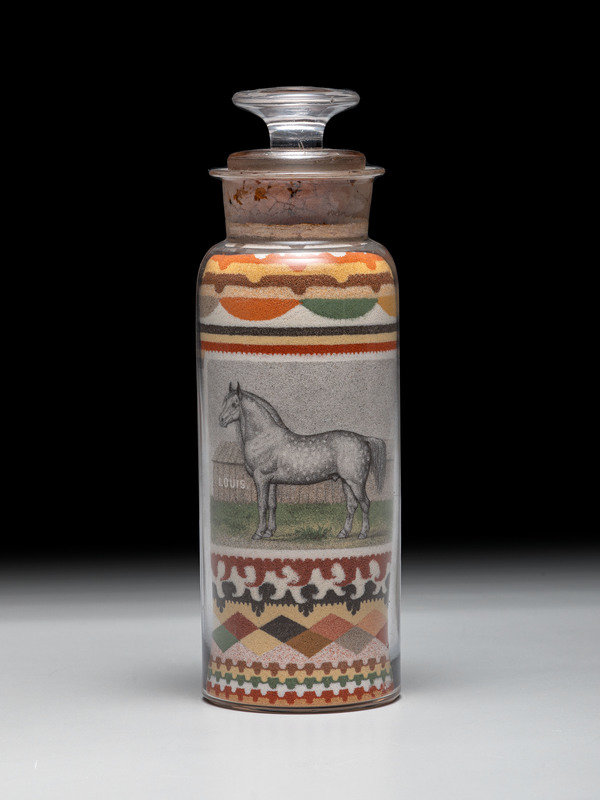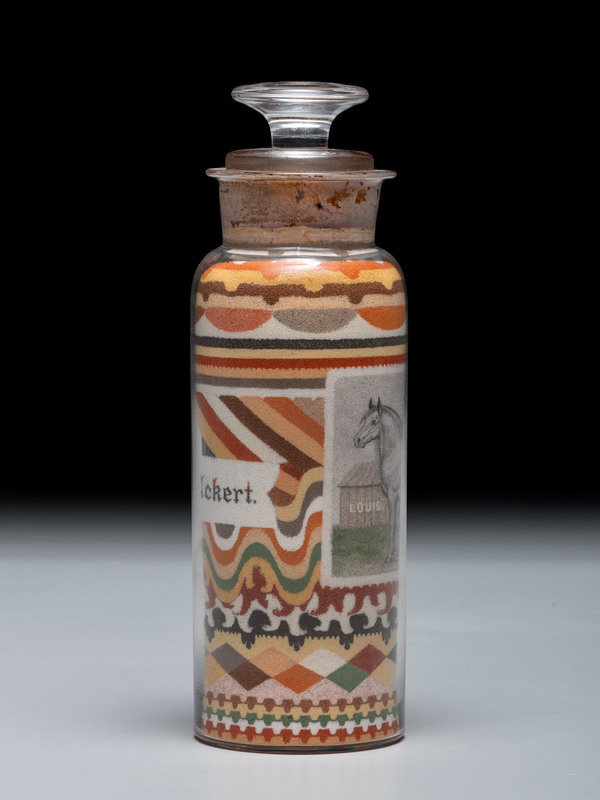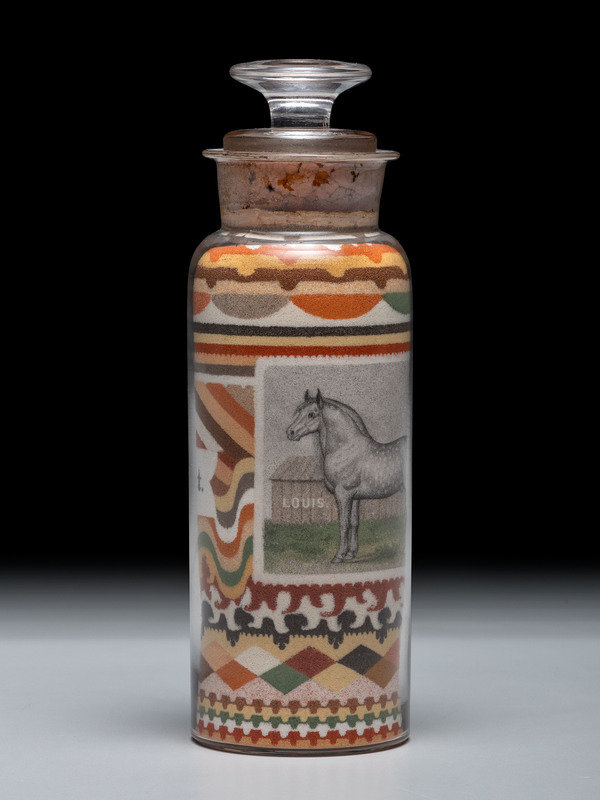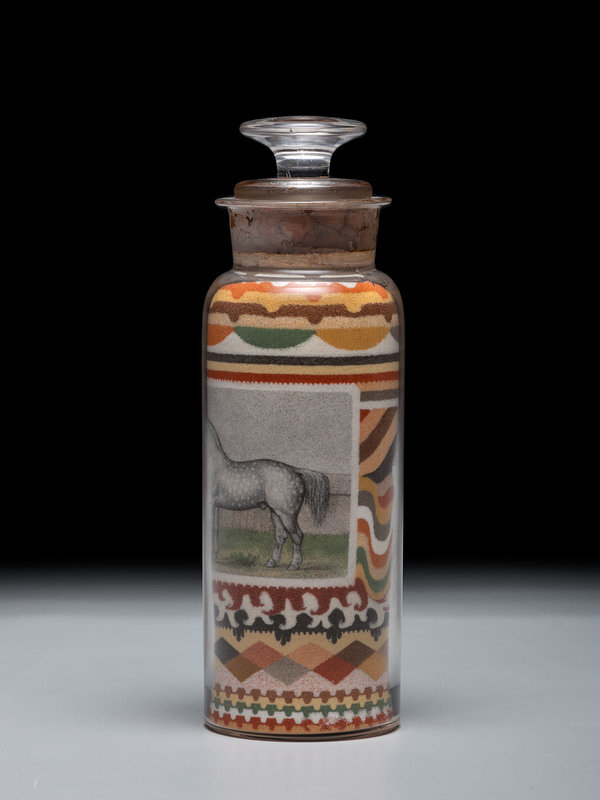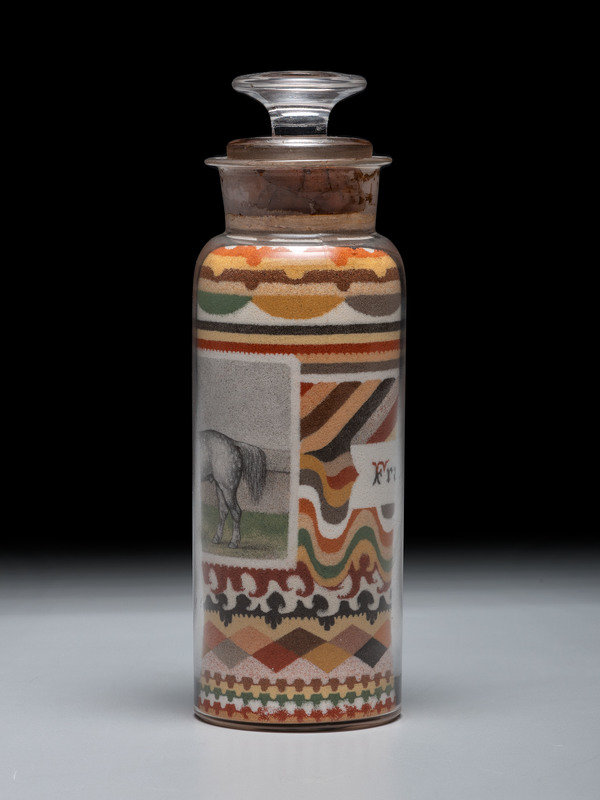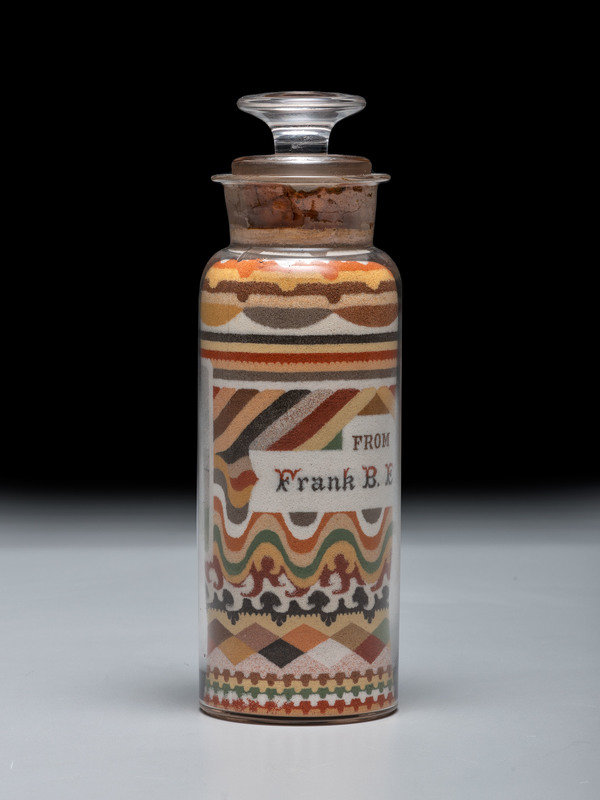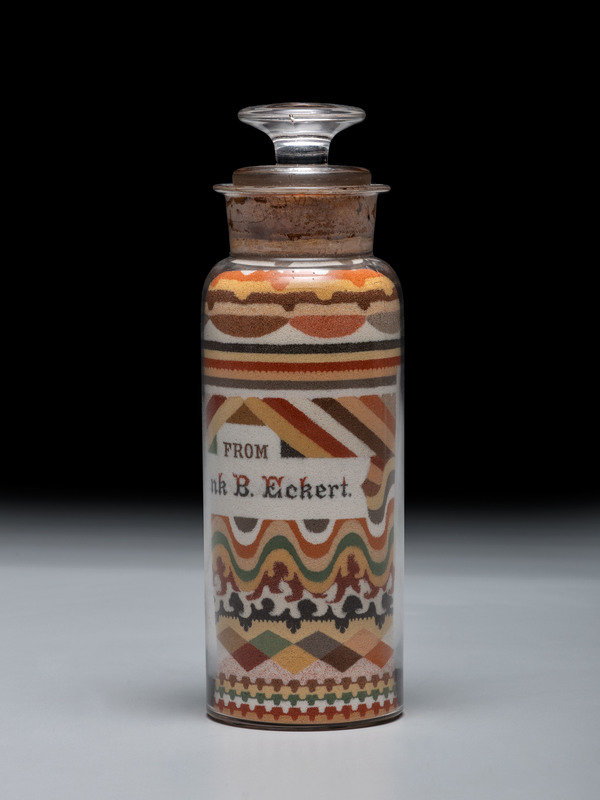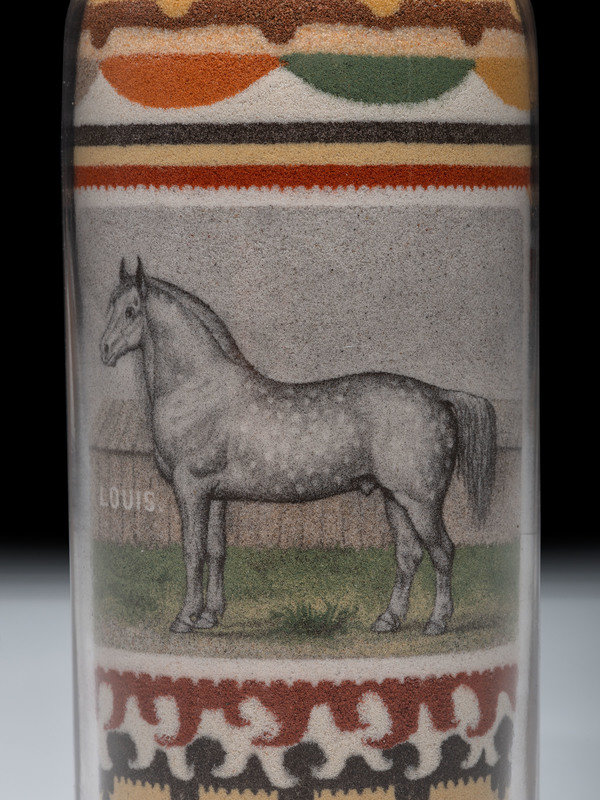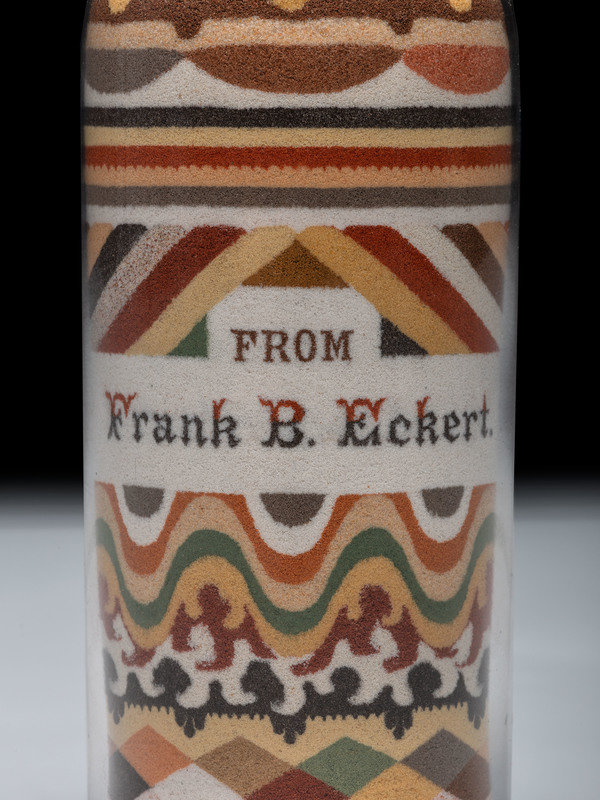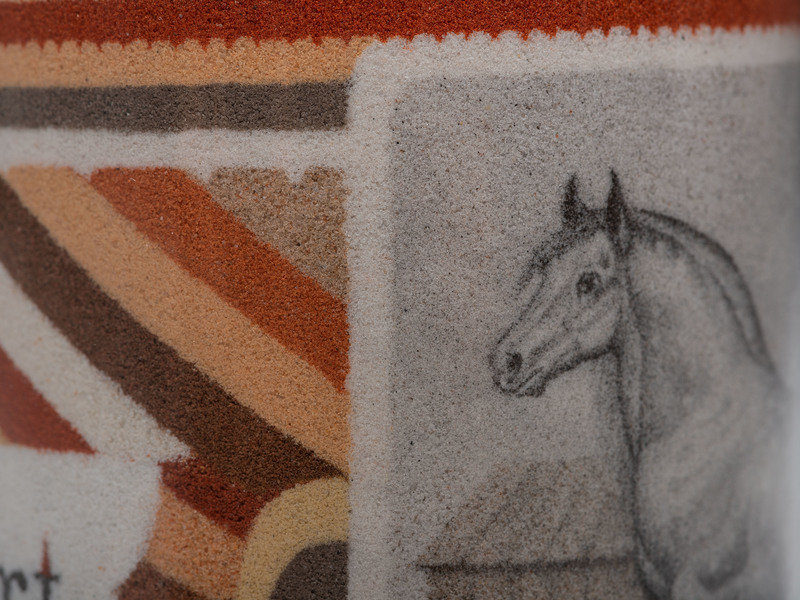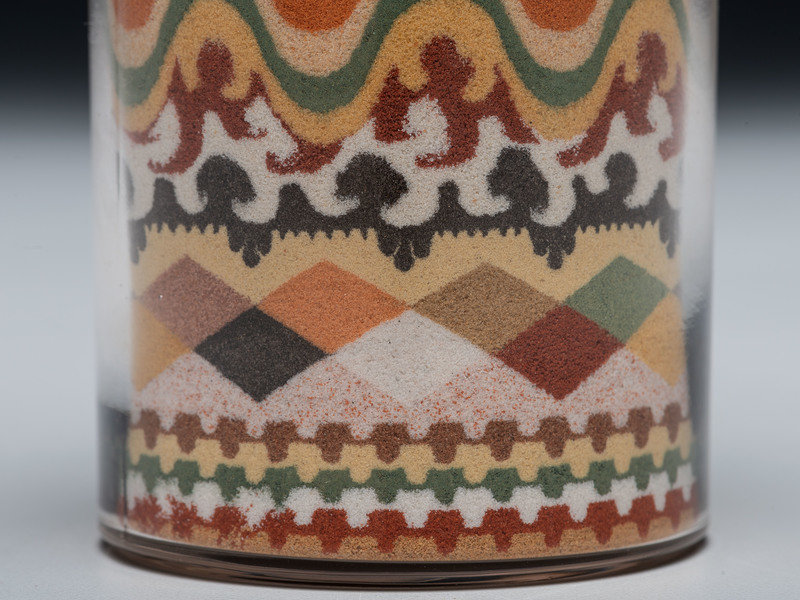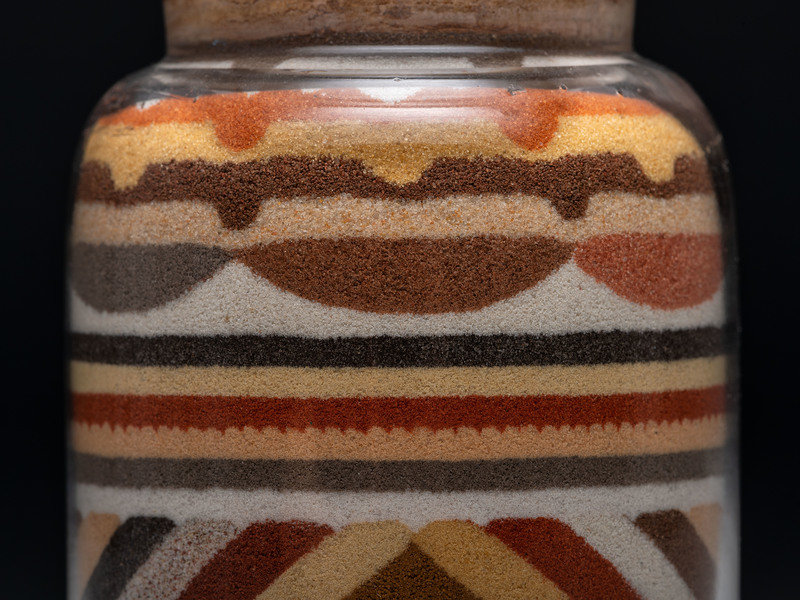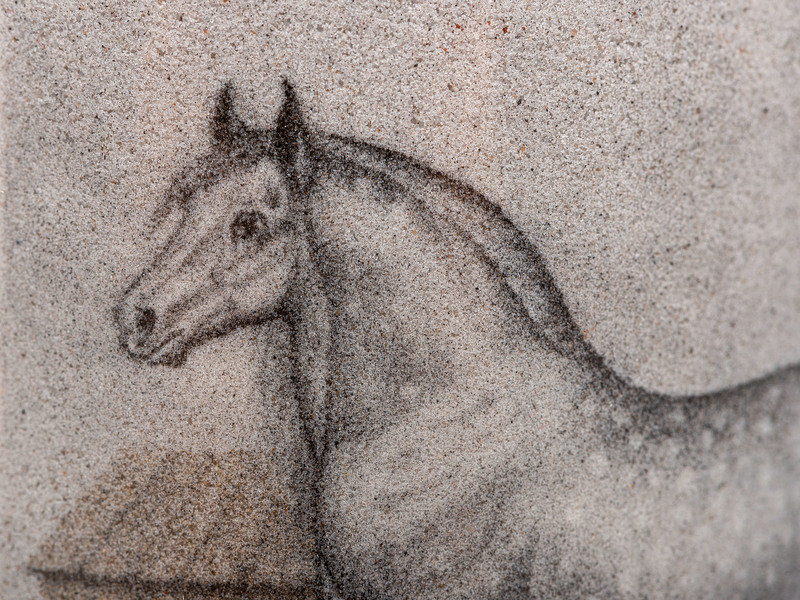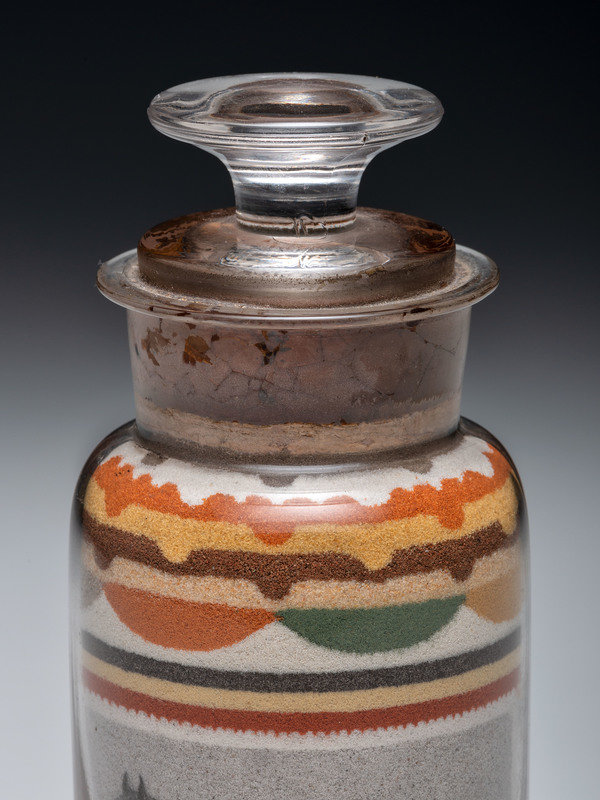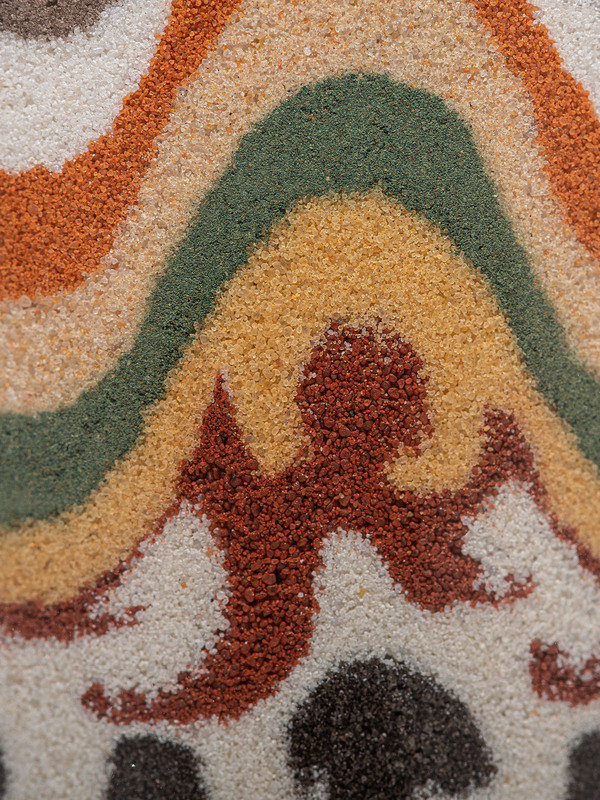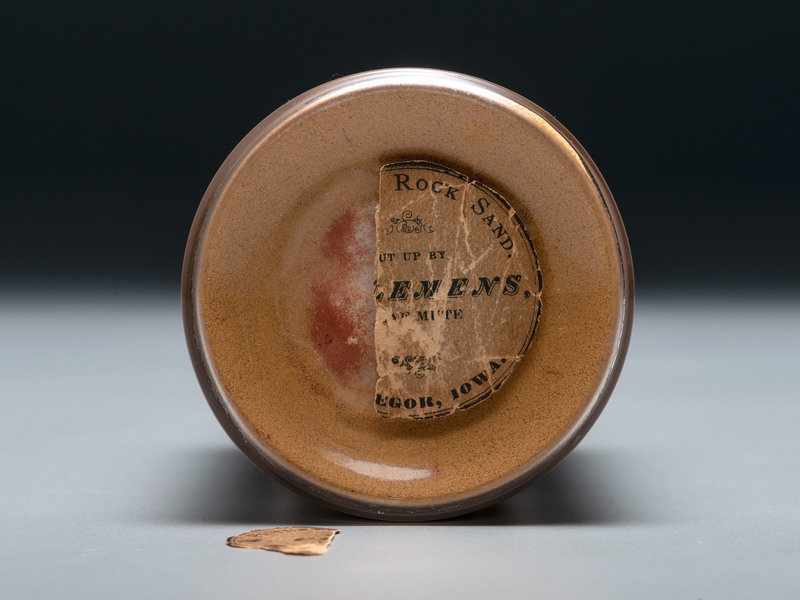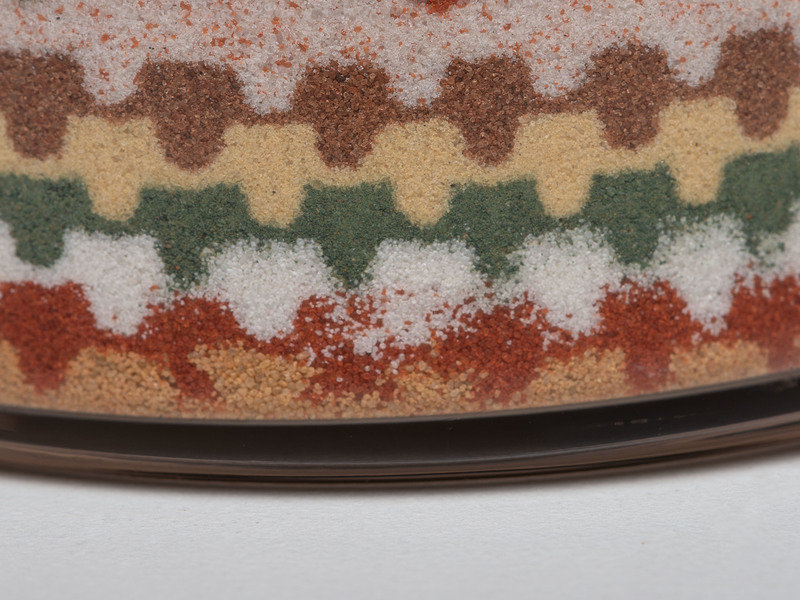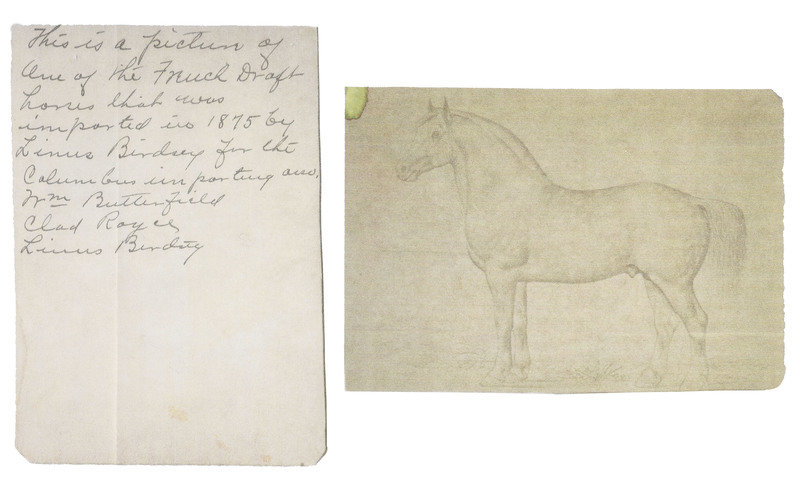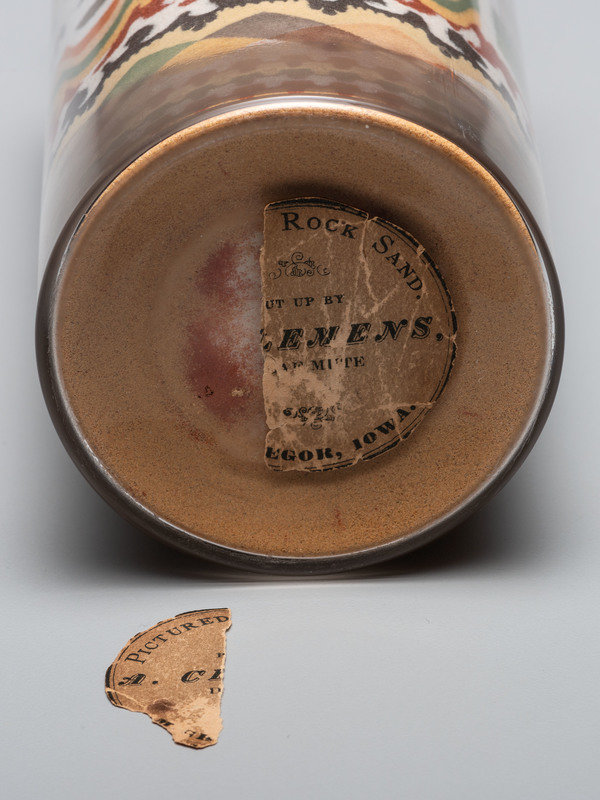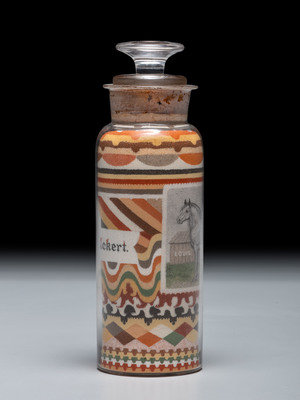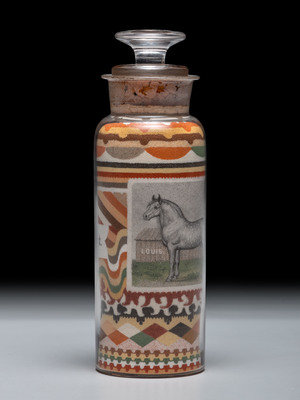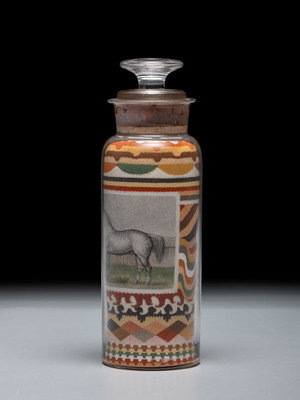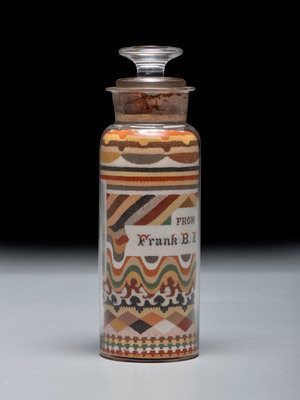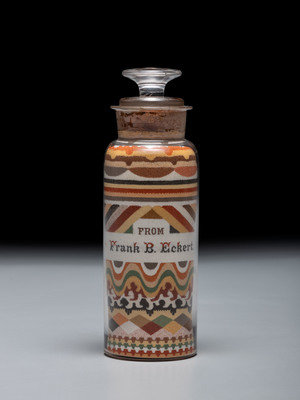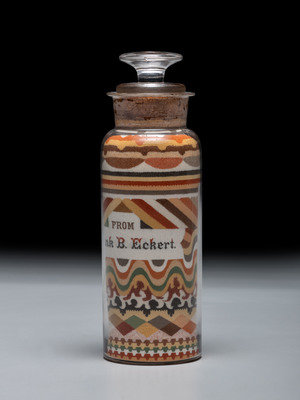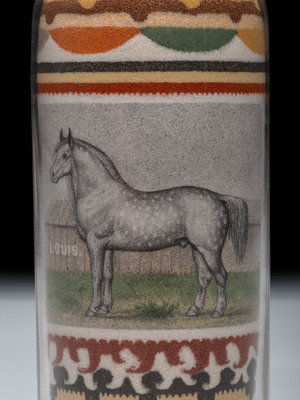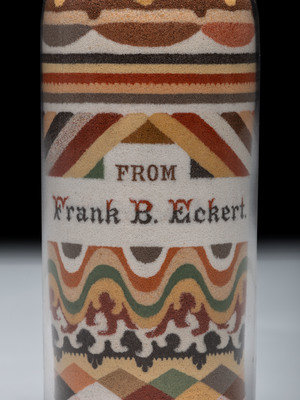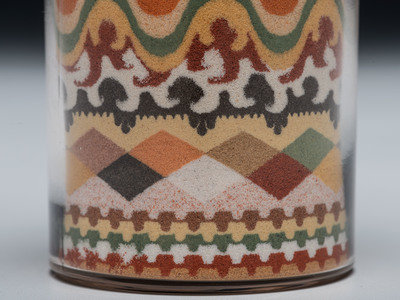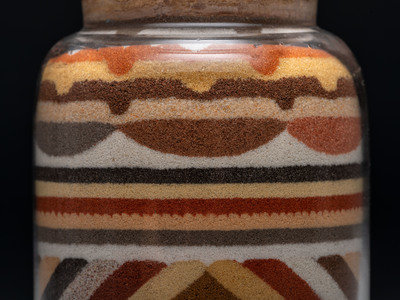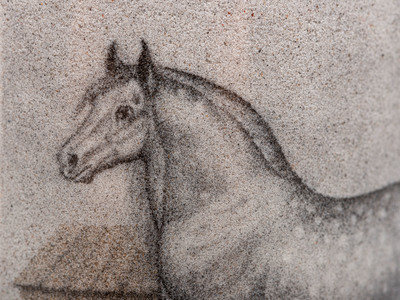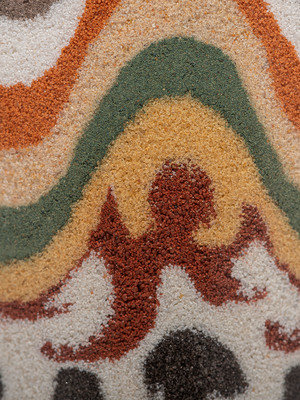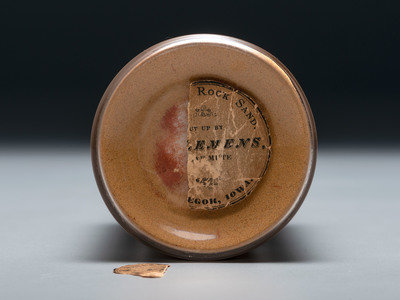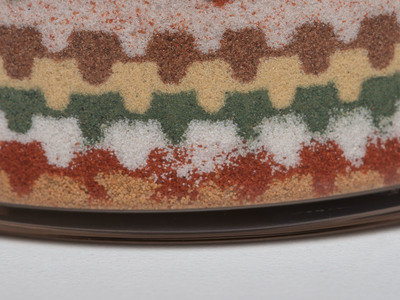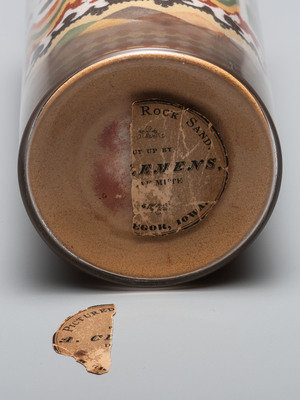Lot 1165
An Andrew Clemens (American, 1857-1894) Labeled Sand Bottle with Percheron Horse
Sale 1060 - American Furniture, Folk & Decorative Arts
Lots 1001-1304
Sep 14, 2022
10:00AM ET
Lots 1305-1582
Sep 15, 2022
10:00AM ET
Live / Cincinnati
Own a similar item?
Estimate
$100,000 -
150,000
Price Realized
$318,750
Sold prices are inclusive of Buyer’s Premium
Lot Description
An Andrew Clemens (American, 1857-1894) Labeled Sand Bottle with Percheron Horse
Commissioned by Frank Eckert (1866-1923) of McGregor, Iowa, circa 1880s
reading From / Frank B. Eckert.
visible on the bottom of the bottle is a black and white printed paper label reading Pictured Rock Sand, Put Up By Andrew Clemens, Deaf-Mute, McGregor, Iowa.
Height with stopper 8 ½ inches.
visible on the bottom of the bottle is a black and white printed paper label reading Pictured Rock Sand, Put Up By Andrew Clemens, Deaf-Mute, McGregor, Iowa.
Height with stopper 8 ½ inches.
Height without stopper 7 ½ inches.
Diameter 2 ¾ inches.
Provenance:
Frank B. Eckert (1866-1923), commissioned either for himself or as a gift;
to his younger daughter Erma Katherine Eckert (1891-1979);
to her son Frank Oliver Johnson (1912-1982);
thence by descent to the present owner.
One side depicts a dappled grey Percheron draft horse in a grassy landscape standing in profile before a wood plank structure, possibly a barn, and identified as Louis at center left. The other side of the bottle reads From Frank B. Eckert in stylized text, offset by oscillating lines and colorful bands of geometric decoration.
to his younger daughter Erma Katherine Eckert (1891-1979);
to her son Frank Oliver Johnson (1912-1982);
thence by descent to the present owner.
One side depicts a dappled grey Percheron draft horse in a grassy landscape standing in profile before a wood plank structure, possibly a barn, and identified as Louis at center left. The other side of the bottle reads From Frank B. Eckert in stylized text, offset by oscillating lines and colorful bands of geometric decoration.
According to family lore, Frank Eckert owned a French draft horse named Louis and commissioned this bottle in commemoration of the stallion. Eckert’s father-in-law, Lewis “Linus” Birdsey (1837-1889) worked as a horse dealer and purportedly imported a stallion named Louis in 1875 to Columbus, Wisconsin, where he and his family lived at the time. Eckert’s descendants retained a preparatory pencil sketch of the horse inscribed to the verso, “This is a picture of one of the French Draft horses that was imported in 1875 for the Columbus importing area. Wm. Butterfield / Chad Royce / Linus Birdsey.”
The story of this bottle is inextricably entwined with the history of the Eckert and Birdsey families, beginning with Linus’s father, Almon P. Birdsey (1813-1869), an early pioneer and prominent Columbus real estate speculator. The elder Birdsey moved west to McGregor in 1865, where he lived until his death in 1869. Linus Birdsey and his family presumably traveled to McGregor during his father’s lifetime, and it is possible that Eckert met Birdsey’s daughter, Rose, on one of these childhood visits. The two began a courtship and had three children during the late 1880s and early 1890s before marrying in Columbus in 1906. The Eckert family lived in Dubuque, Iowa before relocating to Aberdeen, South Dakota where Eckert owned a public accountancy firm by 1910. In the Aberdeen community, Eckert was an active member of the Fraternal Order of Knights of Pythias, the Dramatic Order Knights of Khorassan, and the Order of United Commercial Travelers of America.
Curiously, this bottle’s inscription suggests that it was a gift from Eckert, rather than something he acquired for himself, and the historical record, too, is seemingly at odds with Eckert’s ownership of the horse. At the time when Louis was imported to the States, Eckert would have been only nine years old, presumably neither in need of a personal draft horse nor of the financial means to commission a sand bottle. Further, census data from 1880—1900 suggest that neither Eckert nor his father, Solomon, owned a horse, had Birdsey gifted Louis to the Eckert family prior to the marriage. As a possible alternative explanation, Eckert could have commissioned the bottle as a “courting gift” for his father-in-law in celebration of Birdsey’s professional achievements or perhaps even as a gift for Rose after Linus’s death to honor her father’s legacy.
By this time, Andrew Clemens’s work had begun to garner notable publicity, including a description published in the North Iowa Times of another sand bottle depicting a horse: “The pictured rock sand work of A. Clemens, of McGregor, Iowa is attracting very general attention in the city just now. . . Hon. James N. Carlile has a jar which contains a perfect picture of his horse ‘Eagle Bird’. . . and other designs which show the master skill of the workman.” The general repute of Clemens would have made one of his “rock sand works” a fitting gift, particularly in his hometown. Moreover, had Eckert been aware of the other horse bottle, it may have inspired the commission of the Percheron bottle for Birdsey, given his involvement in the trade.
The earliest Percherons shipped from France arrived in New Jersey in 1839, but it was only after the Civil War and the subsequent dearth of horses it created that the importation of the breed took off in earnest. The Percheron’s size, weight, and strength were invaluable to American farmers and teamsters alike by dint of their adaptability to both heavy farm and draft work. The resulting influx of draft horses corresponded with a period of unprecedented westward expansion, and these animals were funneled in large volume through Midwestern dealers in Ohio, Illinois, and Wisconsin for agricultural pursuits. The first documented draft horses in Wisconsin were Percheron stallions imported from France in 1870, so Birdsey’s ostensible activity in the trade in Columbus by 1875 would have still been early in the movement, and by the 1880s, his dealings were widely covered by the Portage Daily Register, a local Wisconsin newspaper. In March of 1886, it was reported that “Mr. L. Birdsey arrived with his shipment of Norman horses from France Monday noon. He has four as fine stallions as ever came to the State all of them under three years old. Two are jet blacks, one is a very dark steel grey and the other is an iron grey. One of the blacks is an immense fellow. . . close to 1,800 lbs. now.” Later in April, another article records the sale price of one of Birdsey’s imported stallions: “Mr. L. Birdsey has sold the Norman Percheron stallion, Imyr, to A.H. Leedhall, of Estherville, Iowa for $1,500. Imyr is a jet black of fine style and action and was imported from France by Mr. Birdsey only a few weeks ago.” The following year, Birdsey’s sale of a Percheron as far west as Nebraska is mentioned: ““Mr. L. Birdsey, of Columbus, has sold his Norman stallion, “Rothschild,” to Roger Bros., of Madison, who will ship him to Hastings, Neb.”
Unfortunately, no articles record Birdsey’s import or sale of a Percheron named Louis specifically. Wisconsin had no statewide stallion registration laws until 1906, and Iowa residents were only required to register stallions beginning in the early 1910s. The Percheron Horse Association of America, the nation’s first purebred livestock association, was founded in Chicago in 1876, but the organization’s records of stallion registry only began in 1904. As a result of these gaps in the historical record, we may never know with certainty when Louis was imported and his exact chain of ownership. However, assuming Frank Eckert commissioned this bottle as a gift for Linus Birdsey, it is possible that the bottle celebrates Birdsey’s vocation more generally, as opposed to capturing a portrait of a specific horse. The text could also be a tongue-in-cheek allusion to the French spelling of Birdsey’s first name, Lewis, given the origins of the breed in which he dealt. While the exact circumstances of purchase remain unknown, the Percheron bottle is another fascinating and masterfully executed work by Clemens.
References:
Jones, J.E. A History of Columbia County Wisconsin: A Narrative Account of its Historical Progress, Its People, and Its Principal Interests. Chicago, Illinois: The Lewis Publish Company, 1914.
Sanders, Alvin Howard. A History of the Percheron Horse. Chicago, Illinois: Breeder’s Gazette Print, 1917.
Sucholeiki, Roy. The Sand Art Bottles of Andrew Clemens. North Carolina: McFarland & Company, Inc., 2015.
Condition Report
Contact Information
Auction Specialist
